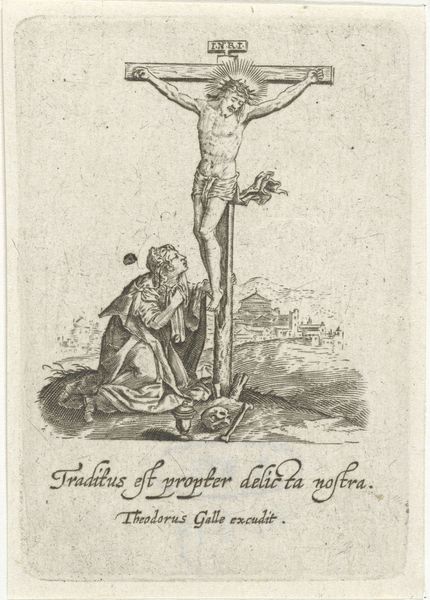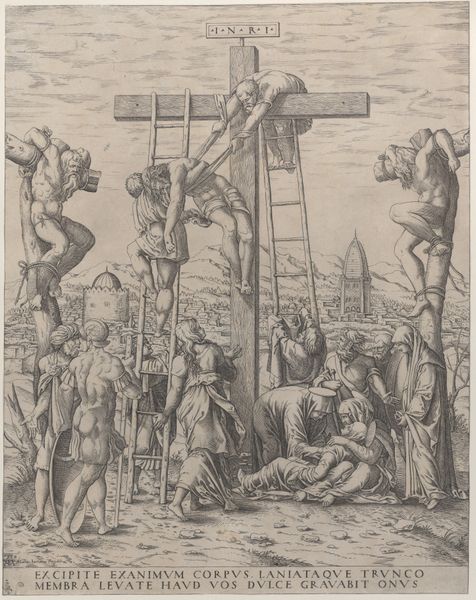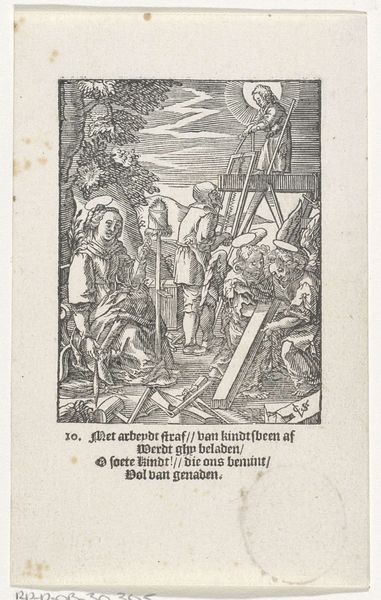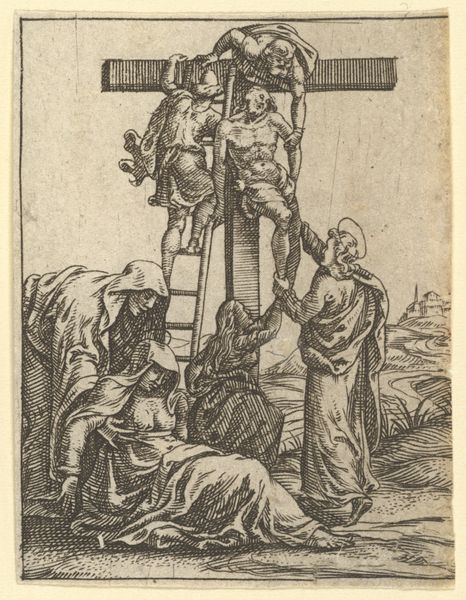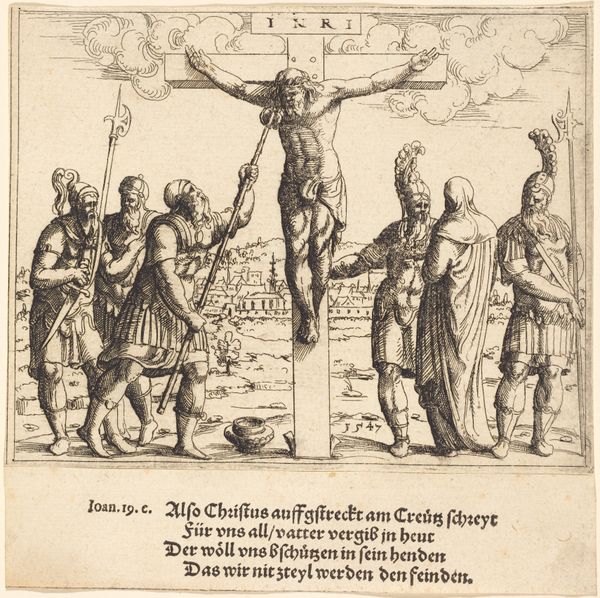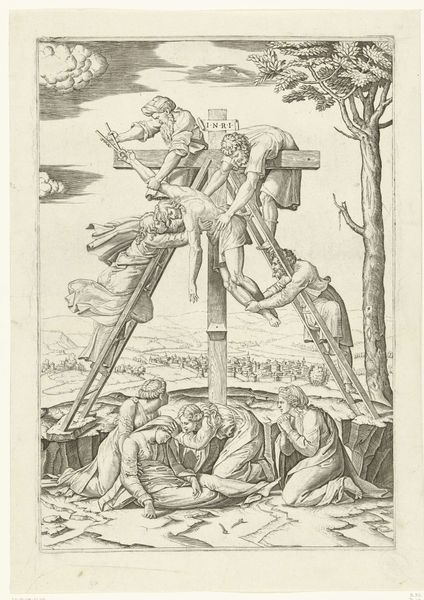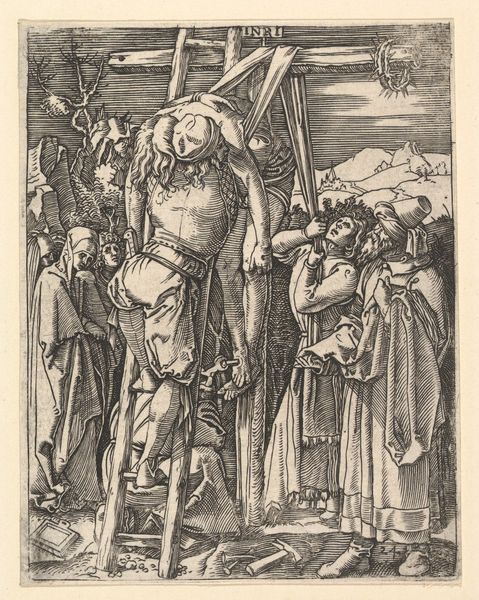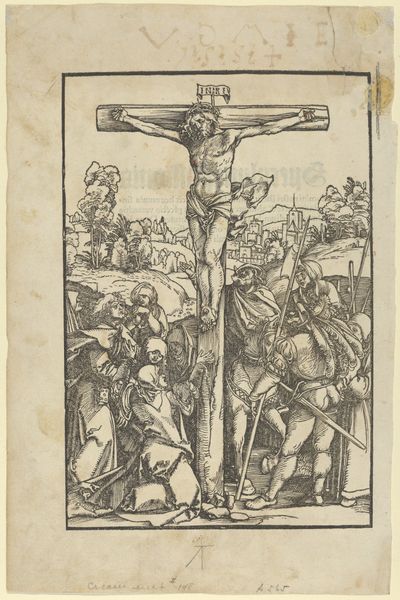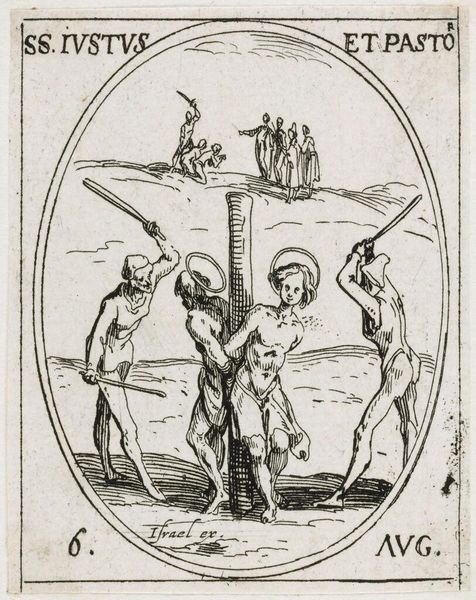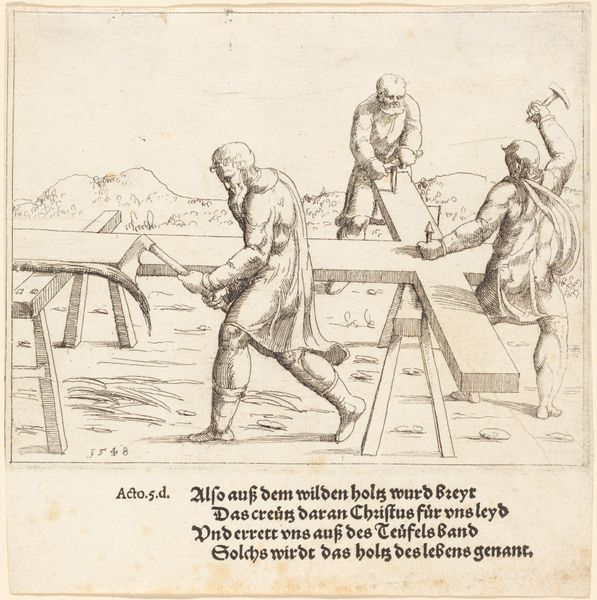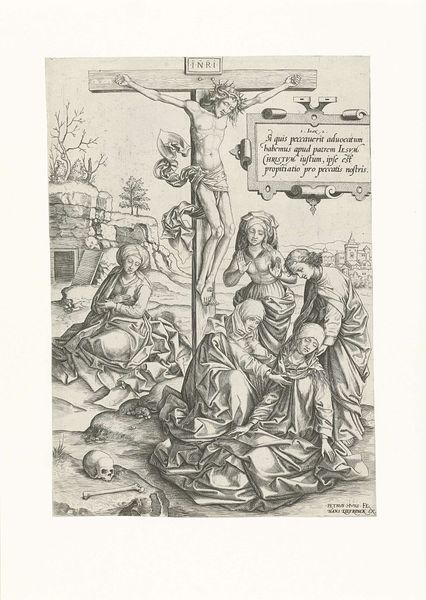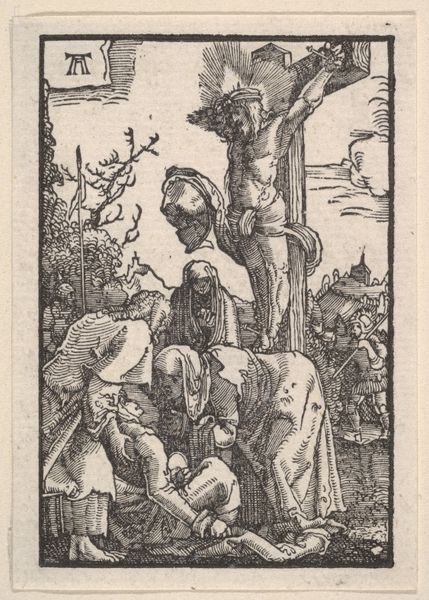
Christ Ascending the Cross with Sin, Death, and the Devil 1547
0:00
0:00
Dimensions: image: 11.8 × 14.8 cm (4 5/8 × 5 13/16 in.) sheet: 15.1 × 14.8 cm (5 15/16 × 5 13/16 in.)
Copyright: National Gallery of Art: CC0 1.0
Curator: Augustin Hirschvogel's engraving, "Christ Ascending the Cross with Sin, Death, and the Devil," from 1547, is certainly a striking work. Editor: It’s a profoundly unsettling image, isn't it? The harsh lines of the engraving accentuate the starkness, and that figure struggling up the ladder...heavy with what appears to be death itself. The composition feels burdened, almost as if the medium itself groans. Curator: That sense of burden is quite deliberate. Notice how Christ carries not only the symbolic weight of sin and death represented physically on his back, but is actively engaging with evil in a dynamic ascent. Editor: The ladder is an interesting formal choice; the cross appears almost geometric. It is visually jarring. There's something undeniably unsettling in how rigidly the lines delineate the figure's form against that fairly detailed background. Curator: Indeed, the ladder signifies spiritual striving, but more than this, it is an intentional re-reading of iconography. By showing Christ actively *ascending* the cross, Hirschvogel perhaps visualises a proactive effort against spiritual decline. A symbolic action of choice. Editor: The stark contrasts and intricate detail demand that the eye travel. It is very intentional, even directive, and effectively communicates a narrative charge with considerable intensity. Is the intention of Hirschvogel Baroque in its nature, if only a precursor to what might later unfold into the style more broadly? Curator: Absolutely. You're right to point that out. Remember that the context is still highly symbolic. That river in the background might stand for death as a gateway or the River Jordan as a threshold, if you like. It’s this intertwining of symbols that carries cultural significance far beyond surface aestheticism. Editor: Yes, that intricate backdrop adds a level of complexity, and its details serve the composition; though the backdrop appears rather naturalistic by contrast with what stands as the main feature, it has depth and intentional placement. It serves as a frame almost for what Hirschvogel represents, an effect heightening that very impact you describe. Curator: Precisely. So, while on the surface this looks like a historical illustration of religious triumph, its symbols actively reflect broader societal anxieties. A reflection perhaps on both personal responsibility and eternal consequences. Editor: On balance, seeing it as a piece reflecting those anxieties feels compelling given its artful, yet simultaneously disquieting use of line, contrast and figure. All features work so very harmoniously to that effect.
Comments
No comments
Be the first to comment and join the conversation on the ultimate creative platform.
